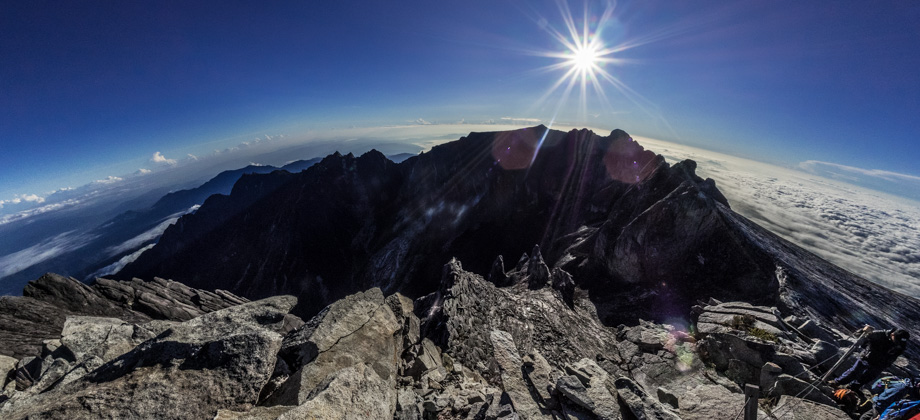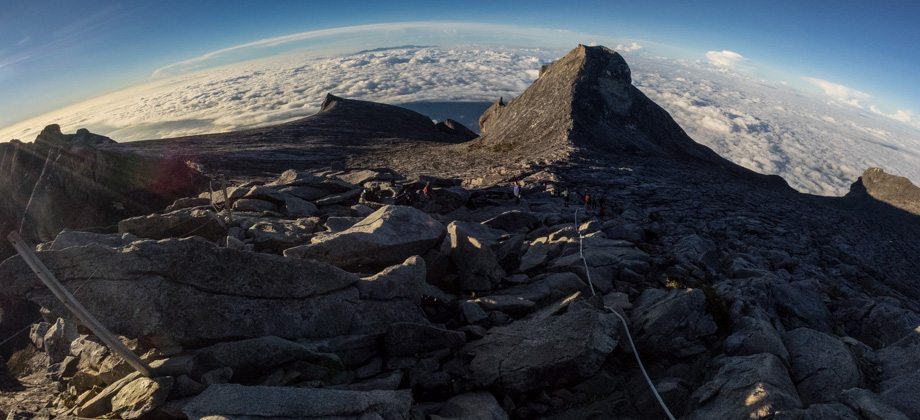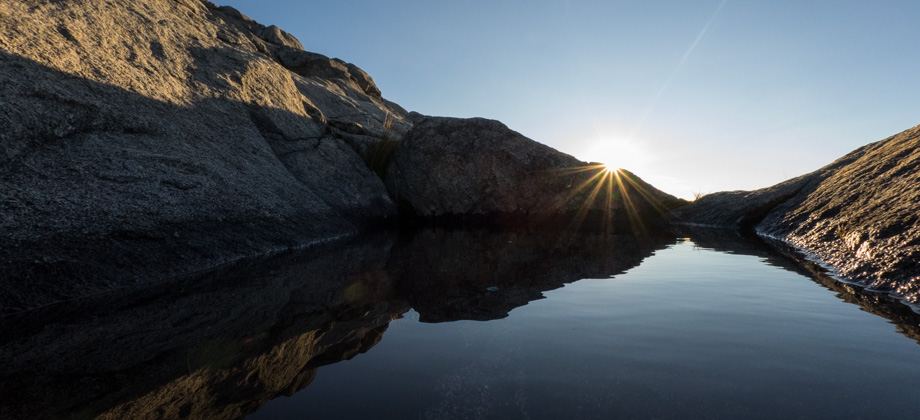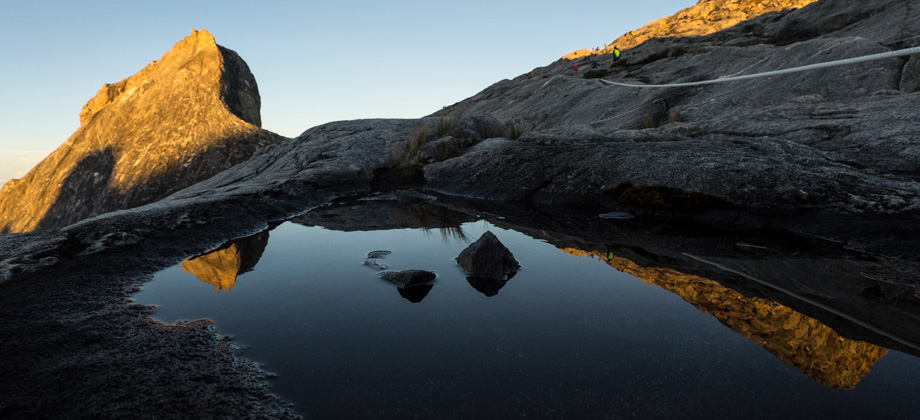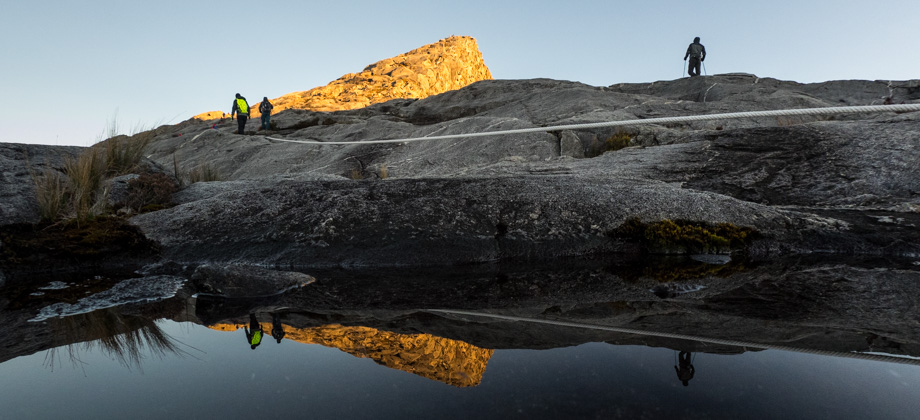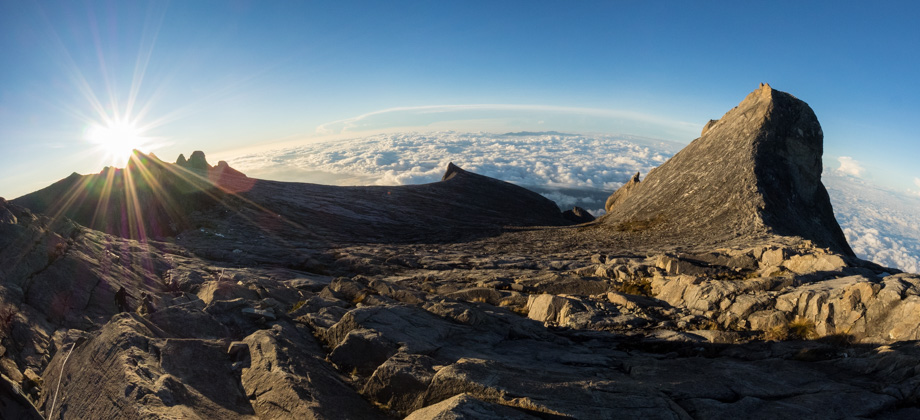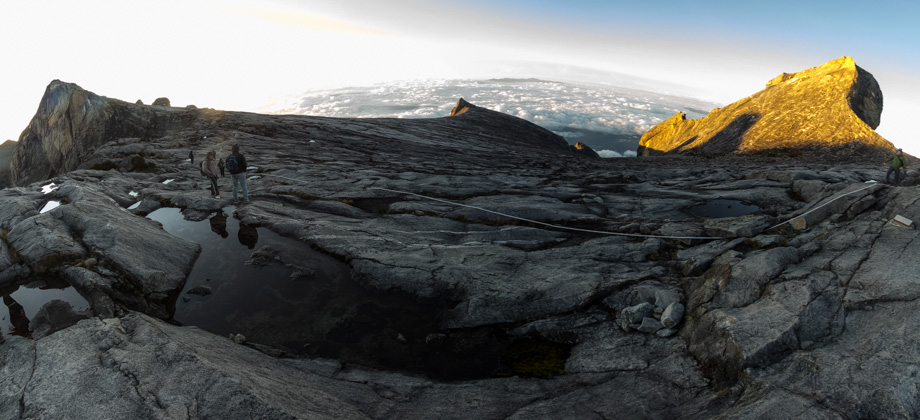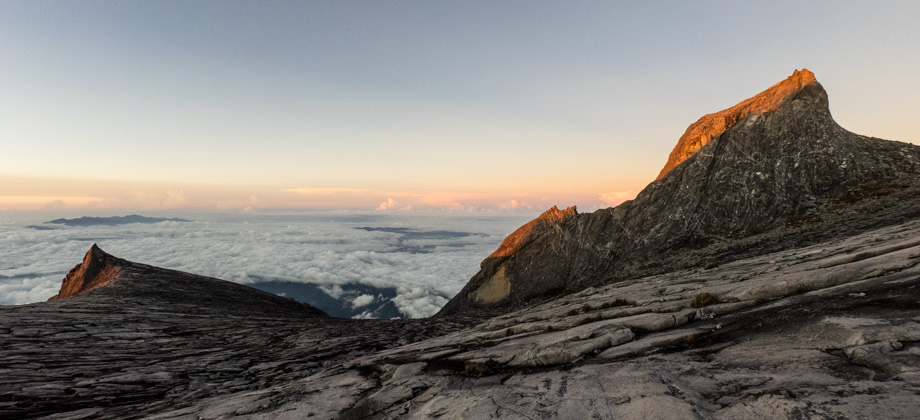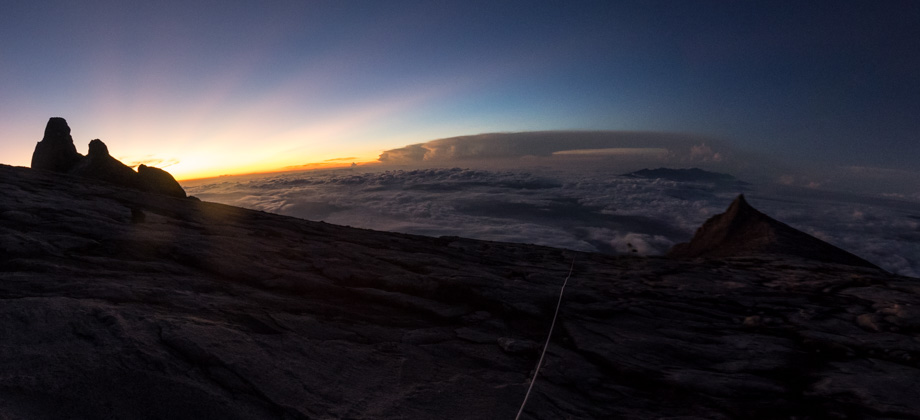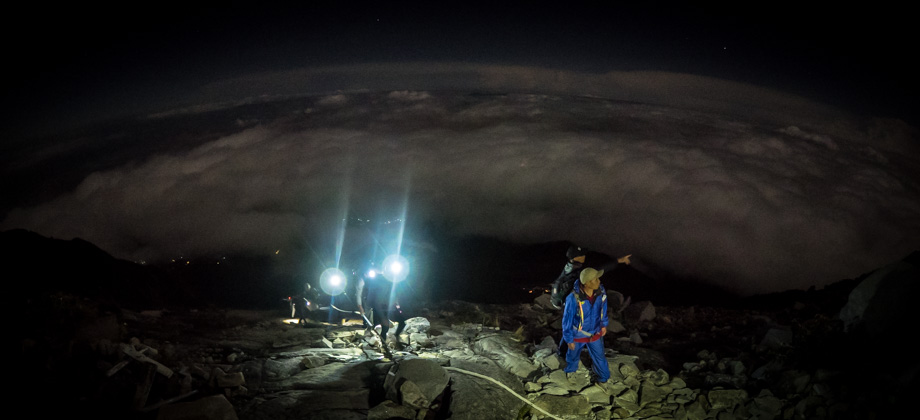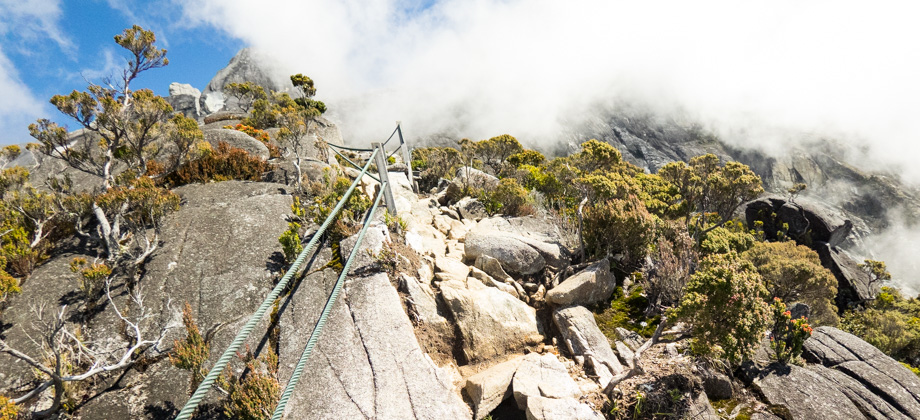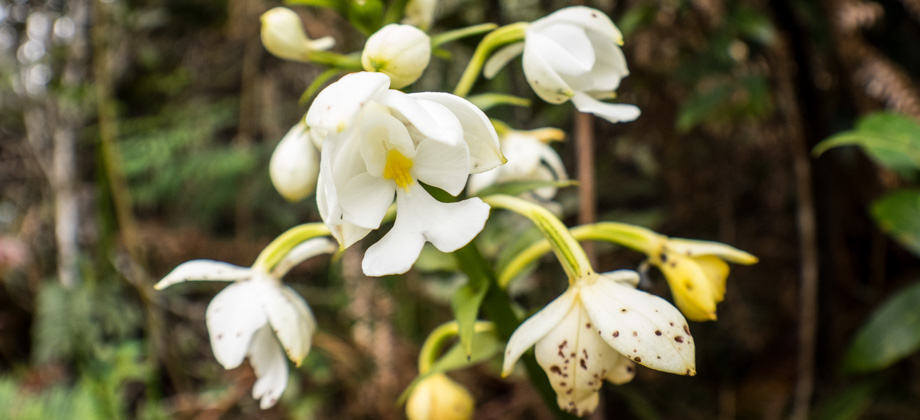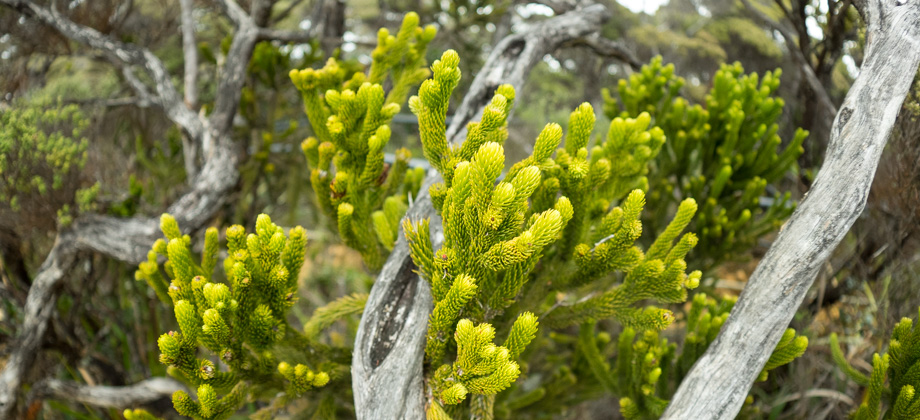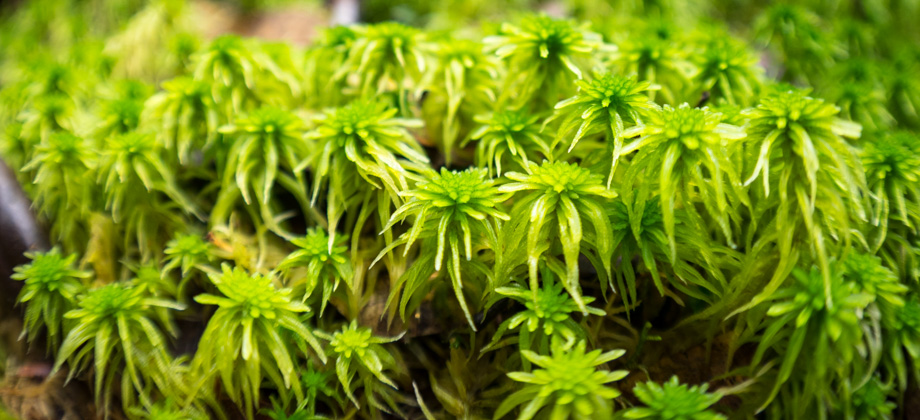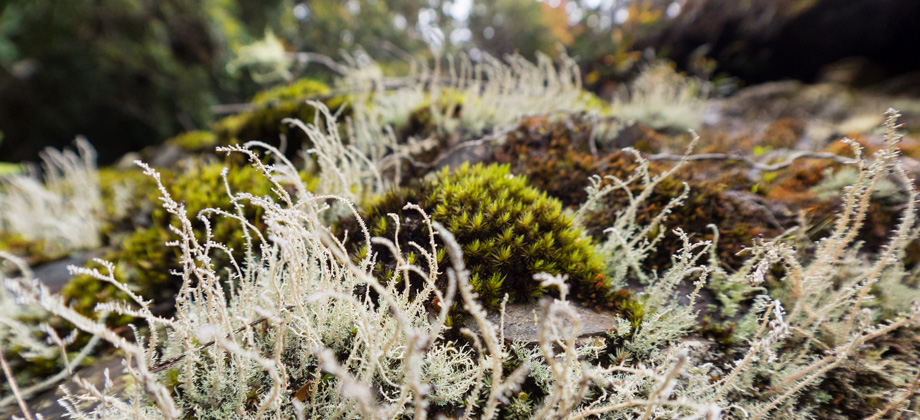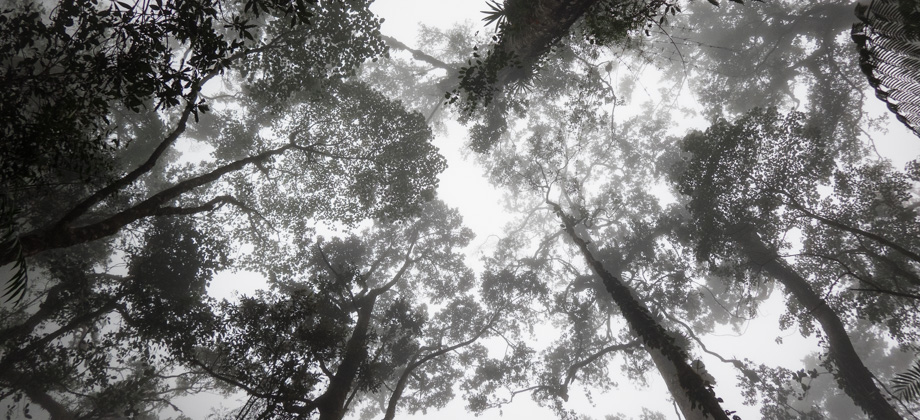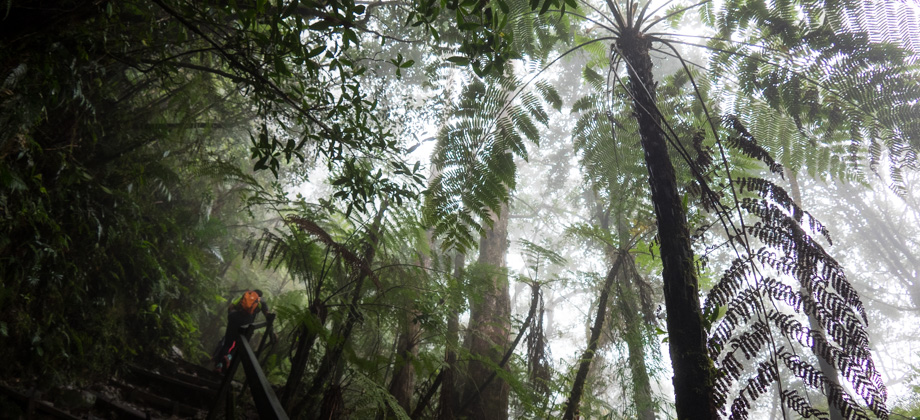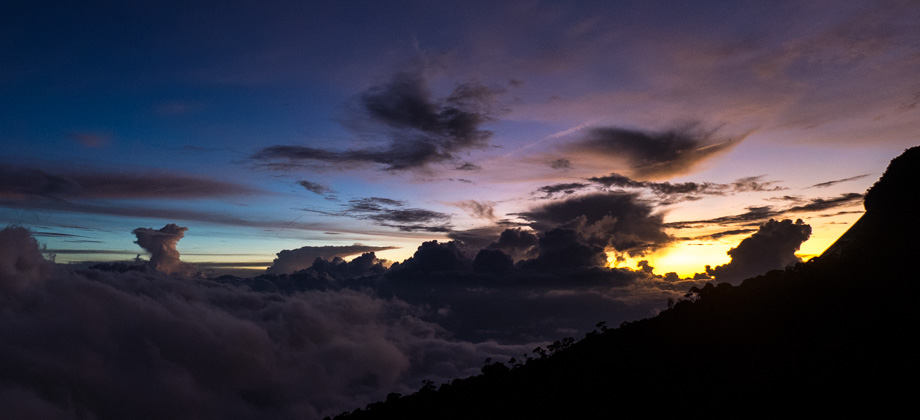Kinabalu via Timpohon Day 1 - To Laban Rata
Pitcher Plants
We continued on from 'Layang-layang Hut'

(
elevation : 2702 m) after a fairly long lunch break of almost 40 minutes, and passed enticing wild raspberries
(Rubus lineatus) at the sides of the trail. The area was more exposed now, and we were starting to see more and more sky. Tiny yet enchanting mountain trachymenes
(Trachymene saniculifolia) began to make their appearance, and seeing them reminded me of
Nepal as they look remarkably similar to
Stellera chamaejasme, a perennial plant that is often seen around the
Annapurna Circuit. Mountain trachymenes, like the rough-leaved rhododendrons
(Rhododendron ericoides), can also be found all the way up to the summit of Mount Kinabalu (
elevation : 4095 m).
 The various flowering stages of the mountain trachymene flower (Trachymene saniculifolia)
The various flowering stages of the mountain trachymene flower (Trachymene saniculifolia)
Kinabalu Park has thirteen different species of pitcher plants, four of which are endemic, namely,
Nepenthes rajah ,
Nepenthes villosa ,
Nepenthes edwardsiana , and
Nepenthes burbidgeae . There were a fair number of
Nepenthes villosa found at this elevation, which is how the next hut a little further up the trail, got its name. This pitcher plant is easily recognisable from the intricate rings that can be seen on its
peristome, and tends to be one of the few that are found higher up on the mountain as it is able to grow at higher elevations than other pitcher plants are able to. Locally, it is sometimes referred to as
Kung Kuanga. Alfred Russel Wallace, in his book 'The Malay Archipelago', described the pitcher plants of
Malaysia as:
"The wonderful Pitcher-plants, forming the genus Nepenthes of botanists, here reach their greatest development. Every mountain-top abounds with them, running along the ground, or climbing over shrubs and stunted trees; their elegant pitchers hanging in every direction. Some of these are long and slender, resembling in form the beautiful Philippine lace-sponge (Euplectella), which has now become so common; others are broad and short. Their colours are green, variously tinted and mottled with red or purple. The finest yet known were obtained on the summit of Kini-balou, in North-west Borneo. One of the broad sort, Nepenthes rajah, will hold two quarts of water in its pitcher. Another, Nepenthes Edwardsiania, has a narrow pitcher twenty inches long; while the plant itself grows to a length of twenty feet."
Alfred Russel Wallace
Further down the mountain however, the small cups of the fringed pitcher plant
(Nepenthes tentaculata) are more often seen as their creeping vines wind their way up and around the branches of other plants. Unlike most other species of pitcher plants, the fringed pitcher plant is not an epiphyte, but grows terrestrially instead. This pitcher plant is one of the most common in Borneo and, because it is so widely distributed, comes in a large variety of colours and patterns.
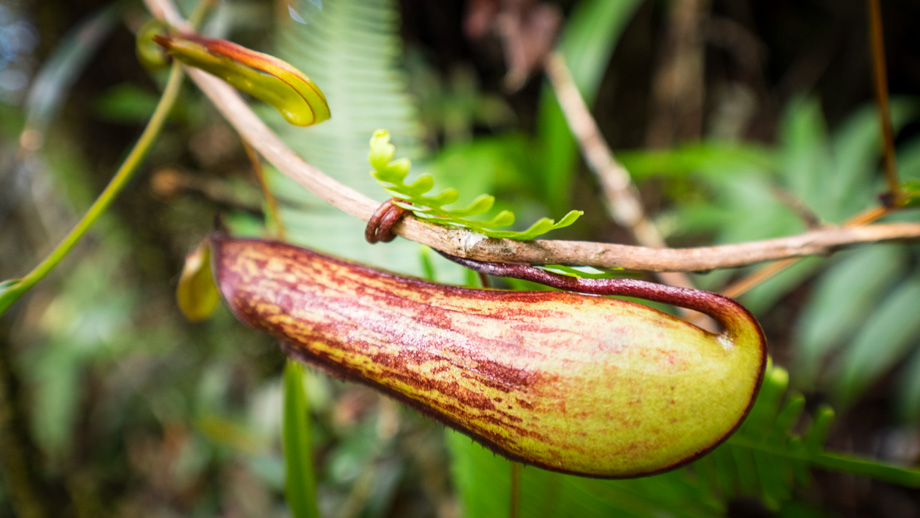 Fringed pitcher plant (Nepenthes tentaculata)
Fringed pitcher plant (Nepenthes tentaculata)
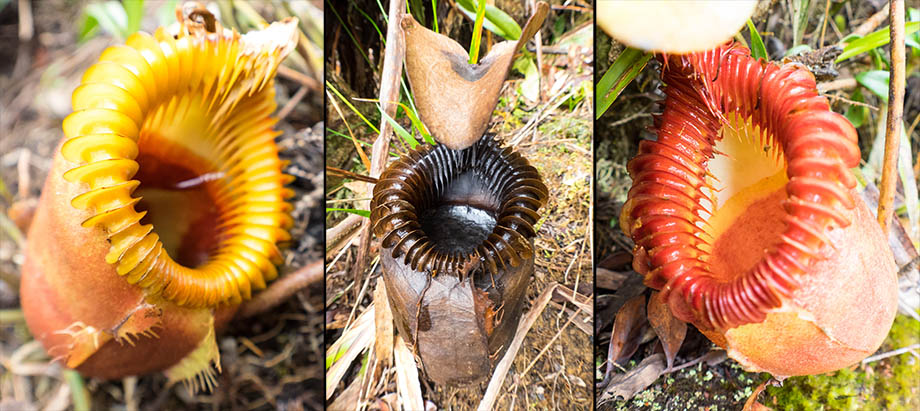 Villose pitcher plants (Nepenthes villosa). The intricate rings can clearly be seen on their peristomes
Villose pitcher plants (Nepenthes villosa). The intricate rings can clearly be seen on their peristomes
'Villosa Hut' (
elevation : 2960 m) is located almost five kilometres into the trail. Once again, the twisted trees of southern pine
(Dacrydium gibbsiae) and sayat-sayat
(Leptospermum recurvum) dominate the sides of the trail. After the hut, the trail ascends to the top of a rocky rise that normally affords you decent views of the peak. However, by the time we arrived at the rise, the clouds had completely shrouded the mountain and the only thing I could see was a blank white canvas in front of me.
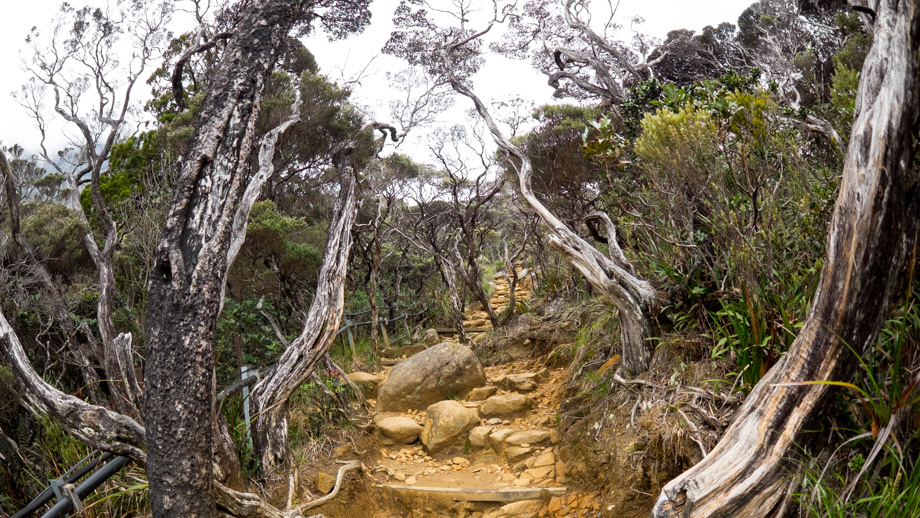 Ultramafic rocks make up the trail
Ultramafic rocks make up the trail





